A hat for a newborn is not just a beautiful accessory, but rather protection from the outside world. A child's ears can easily catch a cold. Therefore, knitted baby hats for newborns with knitting needles will be a good gift for the baby's parents.
General recommendations for knitting children's clothes
Hats can be in the form of helmets, hoods, panamas or beautiful caps. When knitting a hat, it is important to choose the right knitting thread. For a very warm hat, you need to take wool threads, and for a summer hat, cotton is better. Acrylic thread is often used as it is safe and relatively warm. Bright, beautiful headwear is made from acrylic threads.
For warm children's hats, good wool threads are used: cashmere, cashmere with cotton, merino wool, natural sheep wool, mohair, llama wool, alpaca. The comfort of the hat directly depends on the selected threads and model.
Fashionable photos of babies in model caps in the form of flowers and fruits are used only for shootings. But for real life, a hat for a newborn should be comfortable for the baby first of all, and not just look cute.
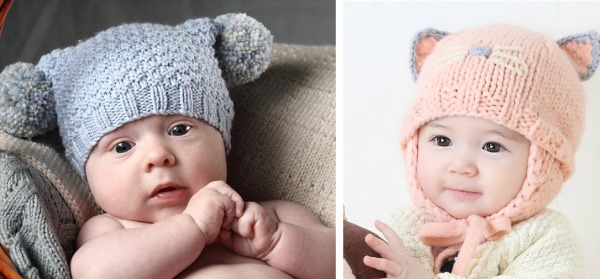
Signs of the right hat for babies:
- warm - for winter, light - for summer;
- soft;
- without seams (or seams on the outside);
- with ties;
- tightly fitting to the head.
Sizes of hats for newborns by month
The size of the head of infants increases by 1-1.4 cm per month. Knowing the current size of the head circumference, you can calculate the size of the hat for your baby's age in 1-2 months.
If you need to knit a hat for someone else's child, then the approximate head circumference sizes for the main months of a newborn's life are given in the table.
| Age of the baby | Baby's height, cm | Cap circumference, cm |
| newborn | 50-55 | 34 |
| 3 months | 55-61 | 40 |
| 6 months | 62-67 | 44 |
| 9 months | 68-77 | 46 |
| 12 months | 74-81 | 47 |
Knitted children's hats with knitting needles with descriptions and patterns for both winter and summer are presented below.
Classic model with ties
The classic cap model with ties perfectly meets the criteria for the best cap for a baby. It fits the head well, the ties under the chin firmly fix the hat on the head. It is usually warm and comfortable.
Materials
Wool or fluff is used to knit such hats. Cashmere and merino wool, as well as alpaca, are very popular for children's clothes. For a small head of a newborn, no more than 60 g of thread will be needed. Knitting needles for knitting the main fabric are taken in 3 sizes. For knitting elastic, knitting needles should be taken half a size smaller than the main ones.
Knitting density
To knit the main pattern, it is necessary to knit a test square to calculate the knitting density.
The usual knitting density for such a hat is 25-30 loops per 10 cm. The knitting density is determined by a trial washed and dried square. To determine the size of the bonnet, the dimensions of the face oval and the depth of the product from the forehead to the crown are taken.
The knitting process
The hat starts with knitting the elastic. It is knitted up to 3 cm high. The knitting is standard: alternate 1 front loop with 1 back loop.
Knitting pattern for elastic band:
| - | | | - | | | - | | |
| - | | | - | | | - | | |
| - | | | - | | | - | | |
| - | | | - | | | - | | |
| - | | | - | | | - | | |
Designations:
| - | — purl p. | |
| | | — persons. p. | |

After the elastic band, the main fabric is knitted:
- It is easier to knit with stocking stitch. If the knitting needles for work are circular, then to obtain the fabric all rows will be front. If knitting is on 2 knitting needles, then the front rows are knitted with front loops, and the reverse rows - with purl.
- After about 20-25 rows, the knitting should be finished. You will get a scarf that can be put on your head over the ears.
- To finish knitting the hat, you still need to knit the part of the hat for the back of the head. To do this, divide the knitting into 3 parts (without tearing off the thread). Knit the middle part of the hat according to the pattern, connect the last loop of this third of knitting with the first loop of the remaining third of knitting.
- Repeat the operation until the entire occipital part is knitted. 4 rows before the end of the main fabric, in the places where the fabrics are joined, you need to decrease the loops so that the cap on the back of the head is slightly pulled together. You can additionally knit a couple of centimeters along the line of the back of the head with an elastic band.
- It remains to knit the ties. You need to start knitting from the corner loops of the hat. By knitting 4-6 loops to the required length, you will get ties for the hat.
Openwork cap for a girl
A beautiful headdress option for a girl is an openwork cap.
The shape of the hat covers the baby's ears and emphasizes the beauty of the child. Such models are popular in the summer.
Materials
100 g cotton yarn or acrylic, knitting needles No. 2.5-4, satin ribbon for decoration.
The knitting process
Cast on the calculated number of stitches onto knitting needles so that the fabric will ultimately tightly cover the oval of the face:
- Knit 2 rows: first row - knit stitches, second - purl all stitches.
- Then knit 1 row with holes using yarn overs. Knit according to the following pattern: 1 yarn over, knit 2 loops together. Knit the next 2 rows again with knit stitches and again – a row with holes.
- This piece of work will be used to decorate the edge of the cap. A satin ribbon is then pulled through the holes.
- After the edge of the cap, the main fabric is knitted with any openwork pattern. You can choose ready-made patterns, or you can experiment with yarns and loops yourself.
- After 8-10 cm of fabric, you need to decrease the rapport on every 5th loop, knitting them together. Then knit 2 rows with face loops, add the decreased loops back, and knit the section with “holes” similarly to the beginning of knitting.
Assembling the cap
Turn the first edge of the cap outward along the holes, pull the ribbon through them. These will be the ties for the cap.
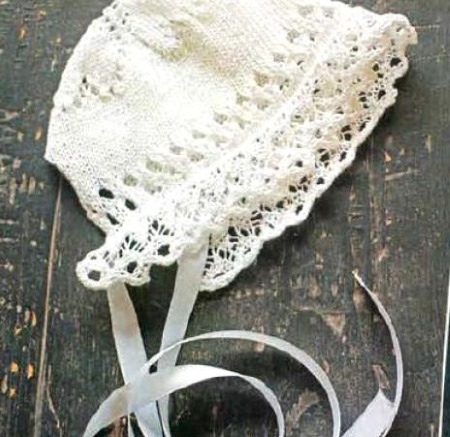
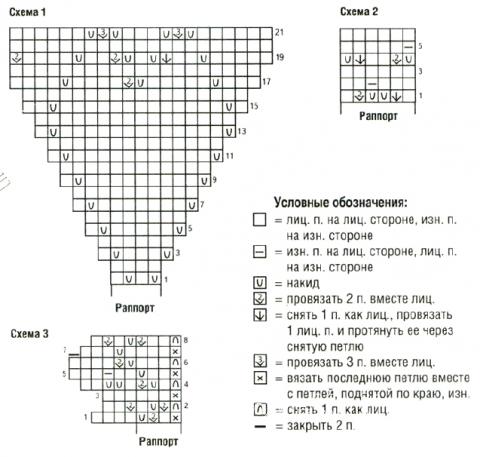
Similarly, fold the back edge of the cap. The ribbon pulled through the last row with holes will create the bottom of the cap.
Rectangular hat for a boy
This is the easiest version of a baby hat to make with knitting needles. In this case, more effort can be put into decorating, since the hat itself is knitted quite quickly.
Materials
Knitted with knitting needles No. 3.5 using woolen threads. Also use threads mixed with acrylic. One skein is enough for the product.
The knitting process
Knit 2 rectangular or square pieces 16-18 cm high. You can knit with any pattern. The density of the knitting is important here. If desired, you can later add a separate lining to the hat.
Decorating
The front side can be decorated with applique, embroidery, beads. Everything depends on the imagination and capabilities of the master.

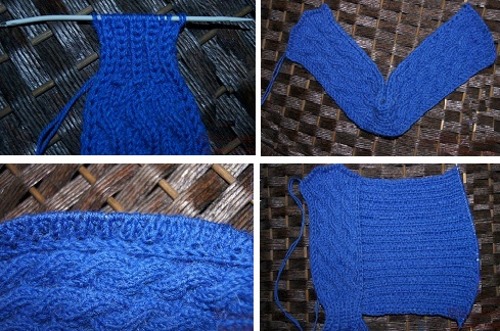
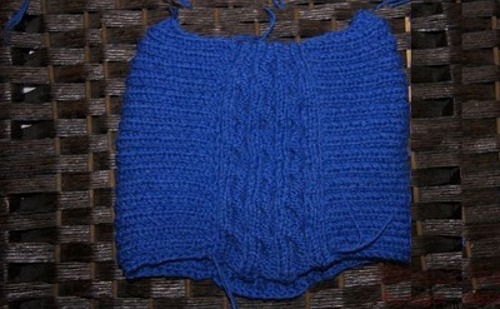

Often such hats are decorated with images of favorite animals or popular cartoon characters. Animal faces can be embroidered with the same quality thread, but in a contrasting color.
Assembly
The finished fabrics are folded with the wrong side out. They are sewn with a needle or a crochet hook along the edges and on top. The upper corners can be turned into ears, in accordance with the decoration on the front side of the hat. You can attach cheerful pompoms or tassels to these corners.
Hat with patterns
Knitted children's hats with knitting needles are suitable for both boys and girls. Girls traditionally want to be dressed more elegantly. A patterned hat for little princesses is an option for spring weather. It won't be hot in it and it will help prevent the child's ears from getting cold.
Materials
It is better to knit hats with patterns from cotton threads, since hats with patterns from woolen threads will turn out thick and uncomfortable for newborns. You will need 70 g of cotton threads, knitting needles No. 2-3.
Knitting density
When knitting patterns, the knitting density of each sample will be individual. The pattern can be very openwork or, on the contrary, contain many braids and arans, which thicken the density of the product and the thread consumption.
Two patterns are used for knitting.
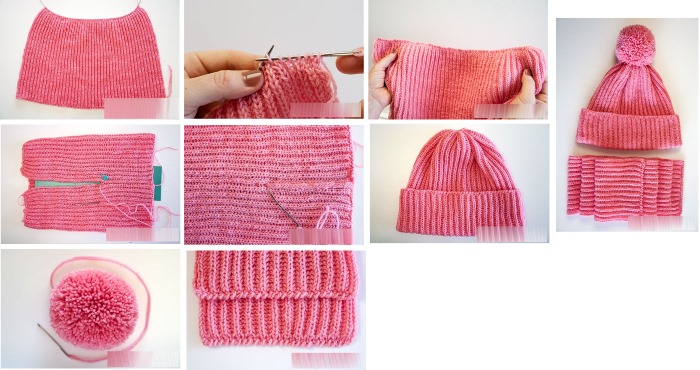
Pattern 1 - "2x2 Elastic Band":
| - | - | | | | | - | - | | | | |
| - | - | | | | | - | - | | | | |
| - | - | | | | | - | - | | | | |
| - | - | | | | | - | - | | | | |
| - | - | | | | | - | - | | | | |
Explanation of symbols:
| - | — purl p. | |
| | | — persons. p. | |
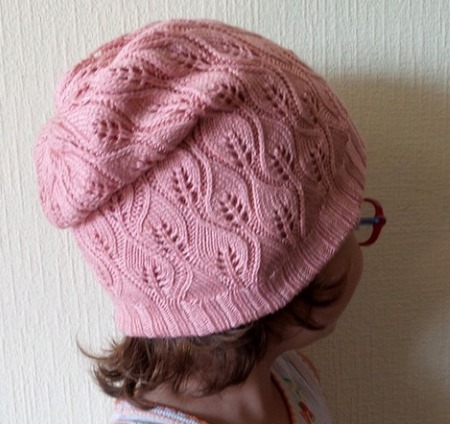
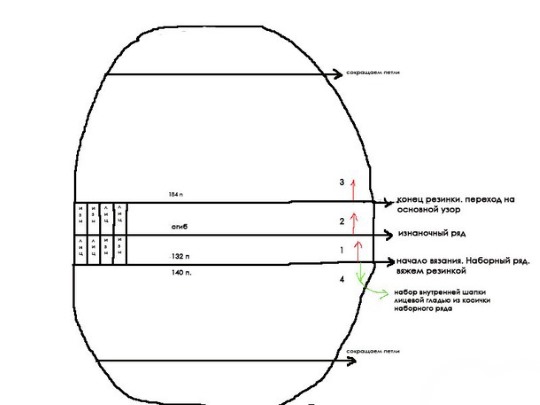
Pattern 2 – “Basic leaflet pattern”:
| - | - | | | - | - | - | | | - | - |
| - | - | | | - | - | - | | | - | - |
| - | | | - | - | - | - | - | | | - |
| - | | | - | - | - | - | - | | | - |
| - | | | - | - | - | - | - | | | - |
| - | - | | | - | - | - | | | - | - |
| - | - | | | - | - | - | | | - | - |
| - | - | - | | | - | | | - | - | - |
| - | - | - | | | - | | | - | - | - |
| - | - | - | | | - | | | - | - | - |
| - | - | - | | | - | | | - | - | - |
Legend:
| - | — purl p. | |
| | | — persons. p. | |
A hat with a pattern can be knitted both on knitting needles with a fishing line and on regular 2 knitting needles. Only the technology of knitting the purl rows will differ: when knitting in a circle, all rows will be knit. When knitting with a cloth on 2 knitting needles, on the reverse side, all loops are knitted according to the pattern - knit loops are knitted as front loops, and purl loops are knitted as back loops.
The knitting process
Cast on the required number of stitches to knit the elastic. After knitting the elastic, knit the fabric with the main pattern to the required height. Then begin gradually reducing the stitches. Here you can make reductions within the pattern. Or you can switch to regular satin stitch and reduce the number of stitches on it. Decreases are made only on the front side of the product.
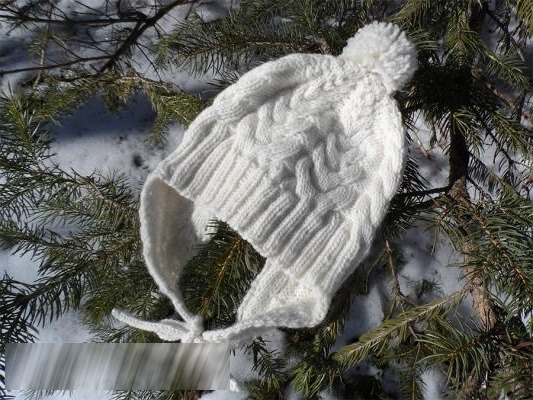 When 6-8 loops remain, they can be gathered on the main thread and tightened on top of the hat. If the product was not knitted on circular needles, then the hat is sewn along the seam from the wrong side.
When 6-8 loops remain, they can be gathered on the main thread and tightened on top of the hat. If the product was not knitted on circular needles, then the hat is sewn along the seam from the wrong side.
Openwork hat
Children's summer hats with openwork patterns look beautiful and protect the child from the sun. You can use additional knitted decor of flowers and leaves in such products to emphasize the individuality of the baby.
Materials
Summer yarn (100% cotton, bamboo, yarnart denim, microfiber, viscose) - 150 m in 50 g. Yarn required - up to 40 g, depending on the type of yarn and the size of the product. Knitting needles for knitting stockings 5 pcs. and circular No. 2.5
Knitting density
On the front surface 40 loops equal 105 cm.
Knitting pattern
| - | - | - | - | - | - | - | - |
| | | | | ABOUT | 3 | ABOUT | | | | | | |
| | | ABOUT | | | 3 | | | ABOUT | | | | |
| ABOUT | | | | | 3 | | | | | ABOUT | | |


Legend:
To knit 3 loops together, you need to remove 2 loops separately from the front thread onto the first knitting needle. Then knit the 3rd loop from the knitting needle as the front loop and then pull the same loop through the 2 loops removed earlier.
The knitting process
The openwork hat according to this pattern is knitted from the bottom up. All odd rows are knitted according to the pattern. All even rows are knitted with purl stitches. The last 2-3 rows should be knitted, decreasing by every 2 stitches. The last stitches are pulled together with one thread.
With frills
Similar to a baby cap, you can knit a more elegant version of a knitted hat – a hat with ruffles. Ruffles can be knitted either on the front or back edge of the cap, or on top of the hat.
 In this case, the crown gets a large, beautiful decoration that attracts attention. Ruffles are more convenient to crochet. They are obtained quickly and lie beautifully on the product.
In this case, the crown gets a large, beautiful decoration that attracts attention. Ruffles are more convenient to crochet. They are obtained quickly and lie beautifully on the product.
Materials
The yarn used is acrylic - 50 g per 150 m. Needles size 3, hook No. 3.
The knitting process
For a head circumference of 45 cm, you need 80 loops + 2 for the edge. Knit the elastic band for the required number of rows and move on to the main fabric. It is knitted evenly: without increases and decreases. From the beginning of knitting to the back of the head, knit 14 cm.
The back of the head is made as follows: continue knitting the fabric, gradually decrease by 2 loops, knitting them together. Gather the remaining 20 loops and tighten with a thread. Sew the seam at the back of the hat, but do not make a seam to the very end of the product. The seam is made with a needle and thread in the color of the main knitting. It is important to make the seam carefully so that it does not interfere with the baby sleeping in the hat in the fresh air.
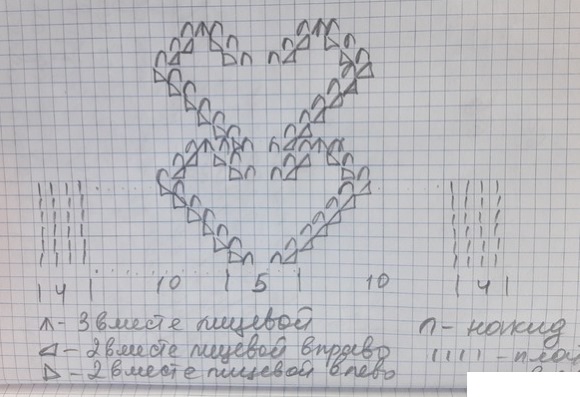
Next, you need to make the ruffles. Use a crochet hook to cast on loops around the entire perimeter of the hat and in the first row, make 4 double crochets from each loop, and in the 2nd row, 3 double crochets. The ruffles are ready.
Ruffles can also be knitted with knitting needles. You need to string the loops from the fold of the hat on circular knitting needles. Then knit 2 new loops from each loop in the first row. In each subsequent row, you need to add 1 loop for every 2, 3, and so on. For beauty, the last row should be knitted in a contrasting color. This will emphasize the individuality of the product and add brightness to it.
Hat helmet
A comfortable hat helmet is suitable for newborns of both sexes. The hat sits tightly on the head, covers the neck and ears. The only inconvenience of such a hat is that small children do not like to put things on over their heads. Therefore, it is better not to put hats and helmets on children older than 6 months.
It is better to knit a helmet hat from soft, pleasant to the touch threads - cashmere, merino. This model is designed for a head circumference of 44 cm.
Materials
Wool yarn (50 g per 100 m) – 55 g. Circular knitting needles, size 3.
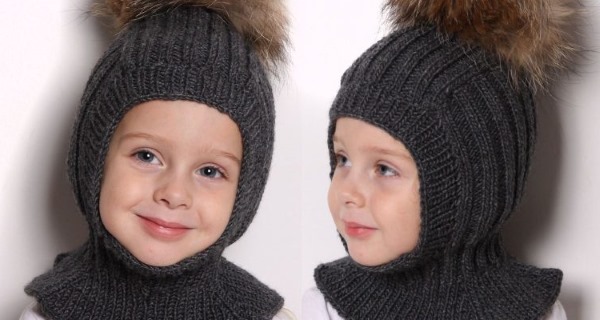
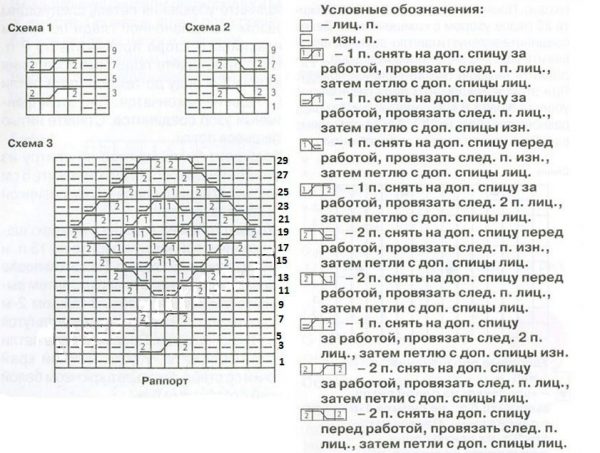
Knitting will be in 2 types of patterns:
- elastic band 2x2;
- Face stitch. When knitting in the round, all stitches must be knitted as faces.
Knitting density
On the front surface, 24 loops for 30 rows equal 10 cm by 10 cm.
The knitting process
Cast on 120 sts and knit in a circle with knitting needles in a rib pattern:
- At 10 cm height of the fabric, close 45 sts for the neckline.
- Continue with forward/reverse knitting. Knit 8 cm and cast on 45 stitches over the previously closed ones.
- Return to circular knitting again. After completing 7 cm, start decreasing. Divide all the loops into 10 parts. Continue knitting with the front surface. In each even row, remove 1 loop in each of the knitting parts.
- When there are only 6 loops left, pull the cut thread through them, tighten, bring to the wrong side, and fasten.
- The neckline will look neater if you crochet it with two rows of double crochets.
Winter hat with ears
Knitted children's hats with ears can be knitted using the square hat pattern described earlier. The ears are formed by themselves after assembling the fabrics. But these will be decorative ears.
For a small child, warm ears on a hat are much more important, as they really protect the newborn. The ties fix the knitted ears on the baby's ears, and there is no need to worry about the hat coming off the child's head.
Materials
Yarn, 100% wool (50 g per 100 m) – 55 g. Knitting needles size 3. Circular knitting needles No. 3 or 4.
The knitting process
Work begins with knitting the ears. The ears initially consist of eight loops. In the process of knitting, the front rows alternate with the back ones. When knitting, add 2 loops in each new row: one at the beginning of the row, and one at the end. Knit like this until the desired size of the ear is formed.
Finish knitting, tie the eye, cut the thread. Transfer the ears to knitting needles for circular knitting. Knit 2 ears together, add 24 front loops to the knitting needle. Add 2 loops on both sides in each row, you will get 28 loops in total. The fabric is knitted in the form of a single circle. This will be the base of the hat.
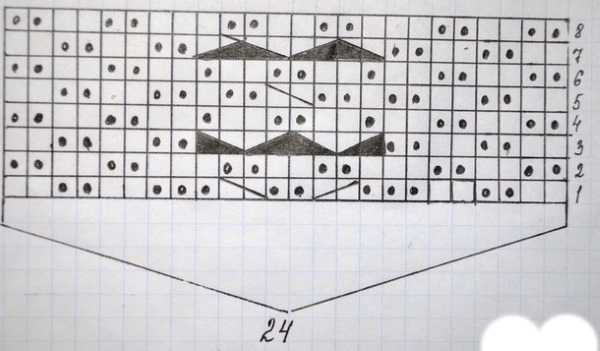
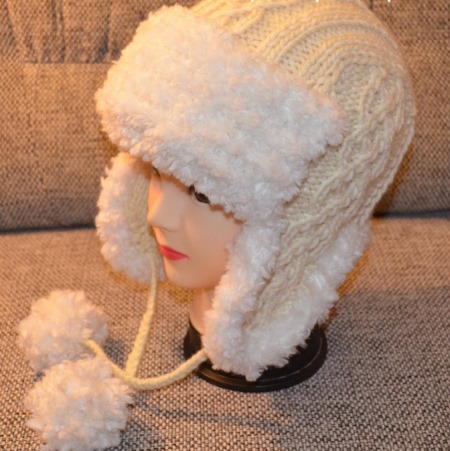
Straight fabric is knitted 32 rows. Then it should be distributed on 4 knitting needles. As the fabric is knitted, decrease knitting by 1 loop per row until 5-7 loops remain. At the end, knit the loops, decorate the hat with a pompom.
Hat with harnesses
A simple winter hat that can be easily knitted in a few quiet evenings - a hat with plaits. Knitted with a simple cloth, can be knitted in a circle.
Materials
A 70g skein of wool yarn and knitting needles from size 4 to 6.
The knitting process
For a 6-month-old baby's head size, you need about 50 stitches. Knit a few cm with a 1×1 elastic band.

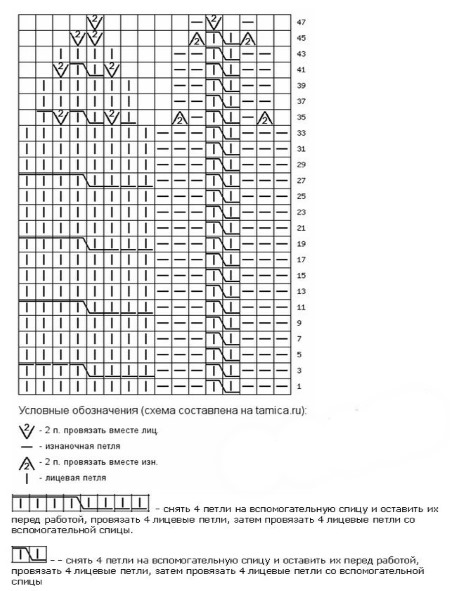
You need to continue with the main pattern:
- 1st row: 3 purl sts, 3 knit sts, 3 purl sts and 6 knit sts.
- 2nd row: 6 knit stitches, 3 purl stitches, 3 knit stitches, 3 purl stitches.
After you have 4-6 rows of knitting, you can start crossing the pattern over each other, creating the illusion of a cord:
- Place the first 3 loops on a separate knitting needle and leave them behind the piece;
- knit the following front loops on the product – 3 front loops;
- return the previously removed loops back to the knitting needle, knit according to the pattern.
The result is a right-tilt crossover. Continue knitting in the same way to the desired height. Cut the thread. Use it to tighten all the loops. Sew the seam on the hat with the thread. You can decorate the top of the hat with a pompom.
With diagonal elastic
Knitted hats in the winter version can be simple and warm at the same time. A very successful model for this is a hat with a diagonal elastic band.

This hat is knitted with one bias fabric, which is sewn together with one seam diagonally.
Materials
Knitting needles size 3-3.5. Threads - 80 g.
The knitting process
The fabric is knitted in the shape of a parallelogram. The shape of the fabric is obtained by simultaneously adding a loop at the beginning of knitting and adding at the end. Additions and decreases should be done in every second row.
Knit the fabric until the bias edge is equal to the head circumference. The loops of the outer rows are carefully sewn together. You can make a pompom on the narrower side of the hat.
With braids
The braids on the hat add volume, making it look fuller and a little more grown-up on the baby.
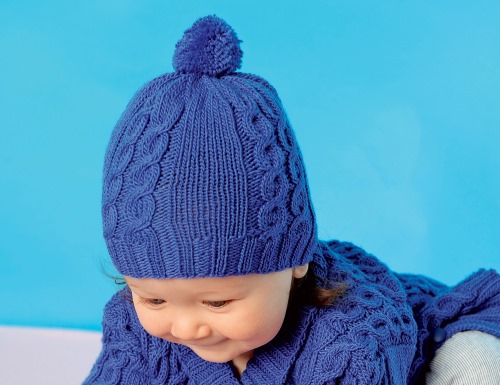 The knitting process is similar to the description of the hat with cords, only small braids are used for the pattern.
The knitting process is similar to the description of the hat with cords, only small braids are used for the pattern.
Materials
A skein of wool-based yarn 80 g and knitting needles from size 3.5 to 5.
The knitting process
You can start by knitting an elastic band of any size you wish. You can knit the hat with the pattern right away. The main pattern is a regular stockinette stitch.
Knit "braid stitch" in each of the 6 rows:
- Row 6: Remove 4 front loops before knitting onto a new knitting needle, knit 4 front loops, then return 4 front loops from a separate knitting needle and knit them. 4 loops - just knit. Repeat the entire row in this way.
- Row 12: Knit 4 stitches, remove the next 4 knit stitches onto a separate needle at the back of the fabric. Knit 4 more stitches, return the stitches from the needle at the back of the fabric, knit them.
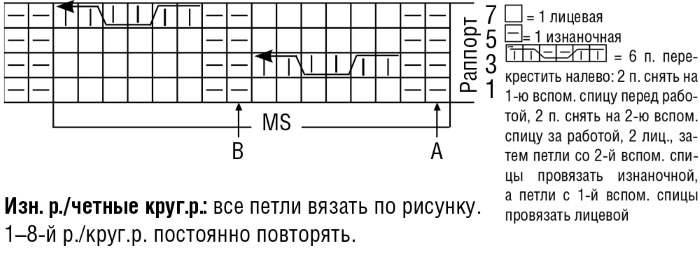
Continue knitting in the same way to the desired height. Cut the thread. Use it to pull all the loops into a ring. Sew the seam on the hat with the thread. You can decorate the top of the hat with frills or a pompom.
With cones
Knitted children's hats with cones are more popular with parents than they are functional. The cones rise high above the hat, the baby tries to tear them off, perceiving them as a toy. Below is an example of knitting such a hat with simple cones.
Materials
1 skein of 100% merino soft (50 g per 125 m). Knitting needles 3.5 cm on a fishing line. Double-pointed knitting needles 3.5 cm. Needle with a wide eye or a crochet hook.
The knitting process
Cast on 73 stitches per circle (72 stitches, 1 for joining), mark the joint. The size is calculated for 40-45 cm. The number of stitches should be divisible by 4.
Knit in a circle 15 cm high. Divide the fabric into 4 knitting needles, start making decreases with a tilt to one side. On each knitting needle decrease 2 loops. Decreases are made through a row. In the end, each of the knitting needles will have 3 loops. Cut the thread, pull it through the remaining loops with a needle, tighten the edge of the knitting.
Knit the cones separately:
- Cast on 2 stitches.
- Remove the first loop.
- From the second loop, knit 4 loops to get 5 loops in total.
- On the reverse side, remove the first loop, knit 3 front and 3 back.
- In the 4th row, decrease by 2 loops.
- Tighten the last 3 loops.
The result is a cone. You can knit a large number of such cones. They are sewn onto the hat in any order using a needle. You can arrange them in a symmetrical order, or you can create a chaotic pattern of multi-colored cones on a white background of the hat.
The topic of knitting, and especially knitting for children, can never be finished. Hats, scarves, blouses, booties, dresses - this is an incomplete list of products for babies that mothers and grandmothers knit with pleasure for their new family members.
A small list of samples of children's hats with descriptions will help you decide on the best option for your beloved baby when you want to pamper your baby and his family with a knitted product.
Article formatting:Natalie Podolskaya
Video about knitting children's hats
Knitted children's hats with knitting needles:

Knitting children's hats with knitting needles for the winter will not take much time. The hat can be made two-layered, so that the child is warm and comfortable to wear it in the winter. It is better to knit the second layer from cotton. For a winter two-layer hat with a lapel, you need to carefully select the materials.
The choice of yarn should be approached responsibly. It is desirable that the yarn be hypoallergenic and of natural composition. After choosing the yarn, it is necessary to select suitable knitting needles. Many thread labels print the recommended knitting needle size.
To make the finished knitted product the right size, you first need to knit a sample of approximately 10 x 10 cm. It is easy to calculate the knitting density and material consumption using the sample.
Before you start knitting, you need to measure the circumference of your child's head. You will need a soft tailor's tape measure. You need to measure above the eyebrows around the entire head through the back of the head. You can repeat this several times and then take the average of all the values.
If it is not possible to take measurements, you can use the table of head circumference correspondence depending on the child’s age.
Head circumference for newborns is measured by month.